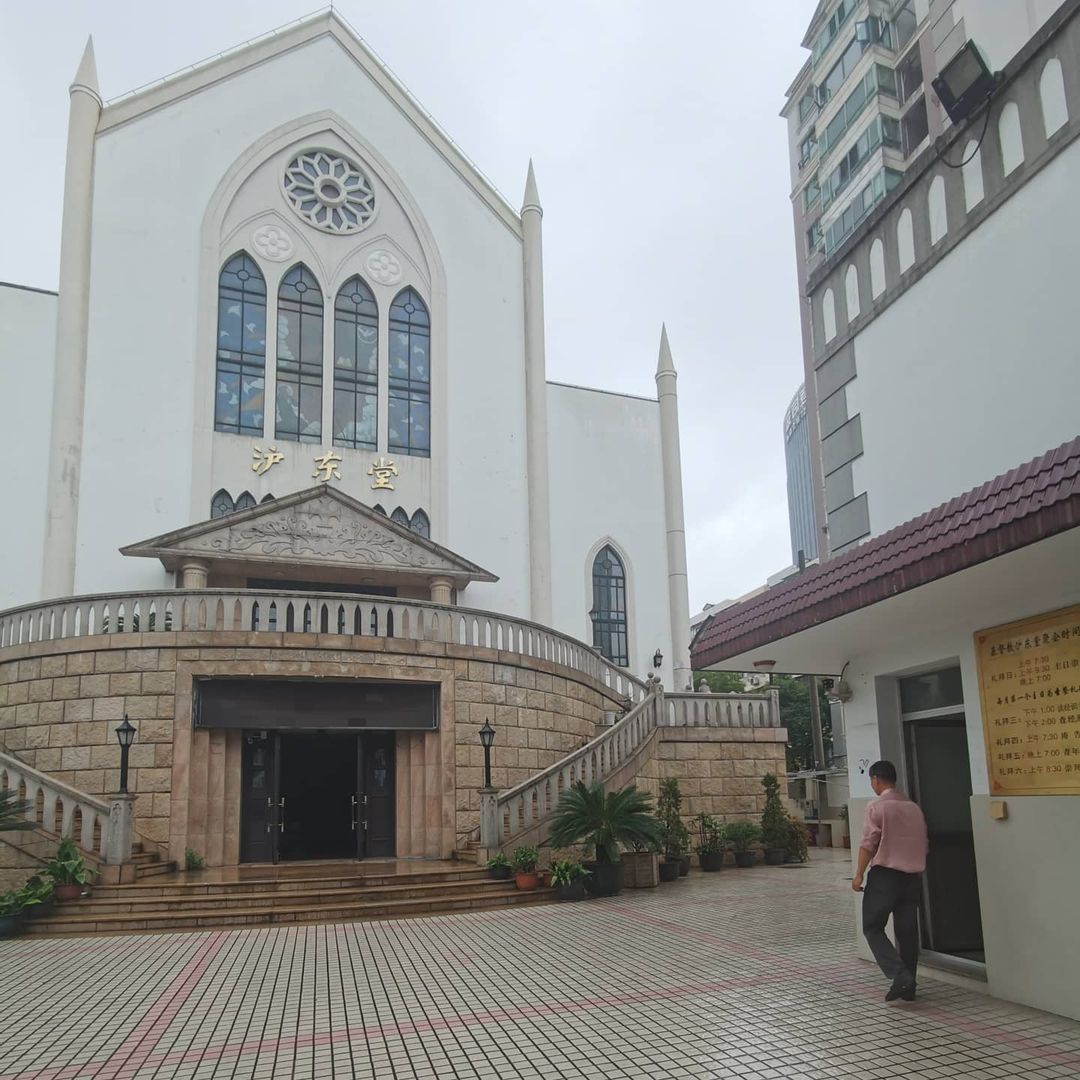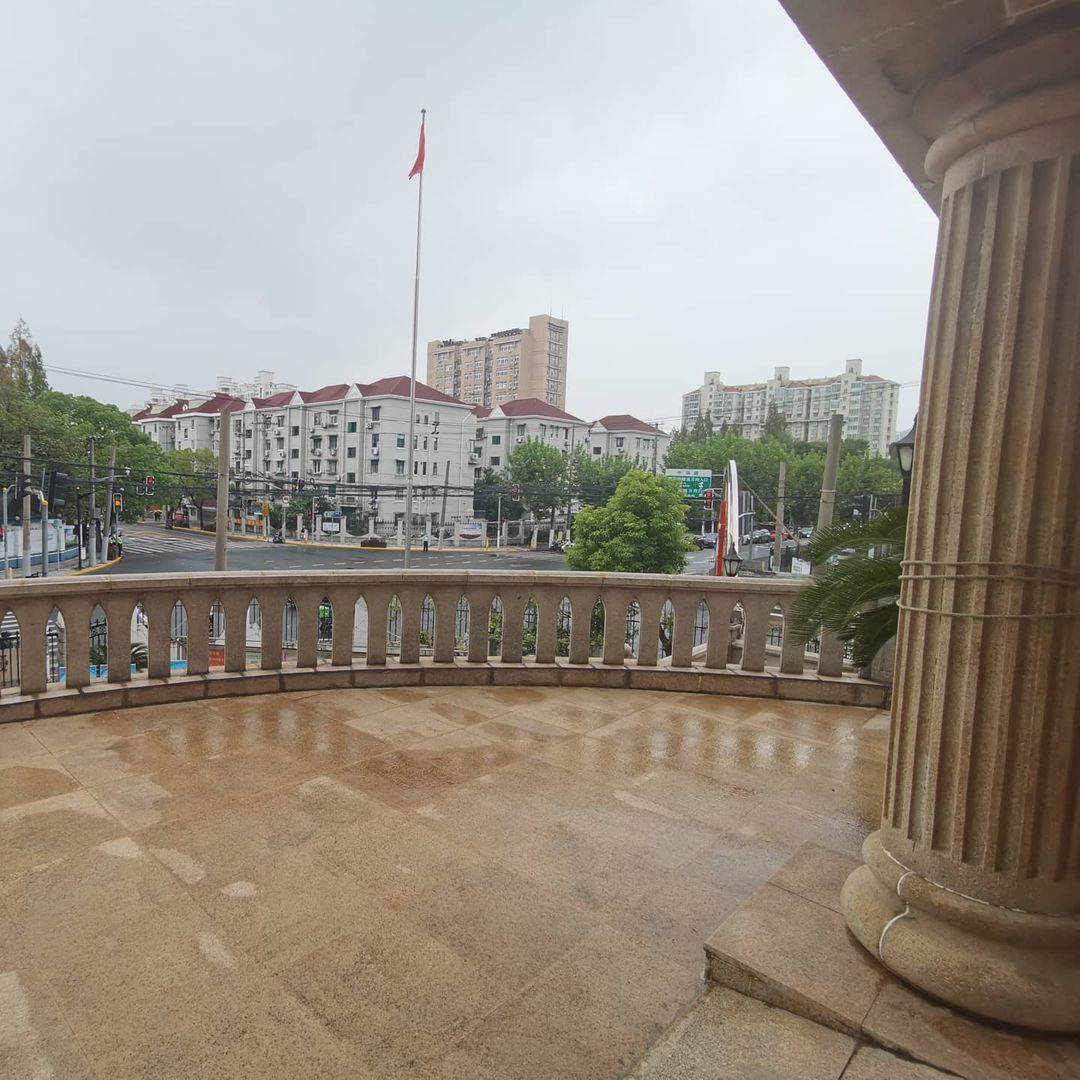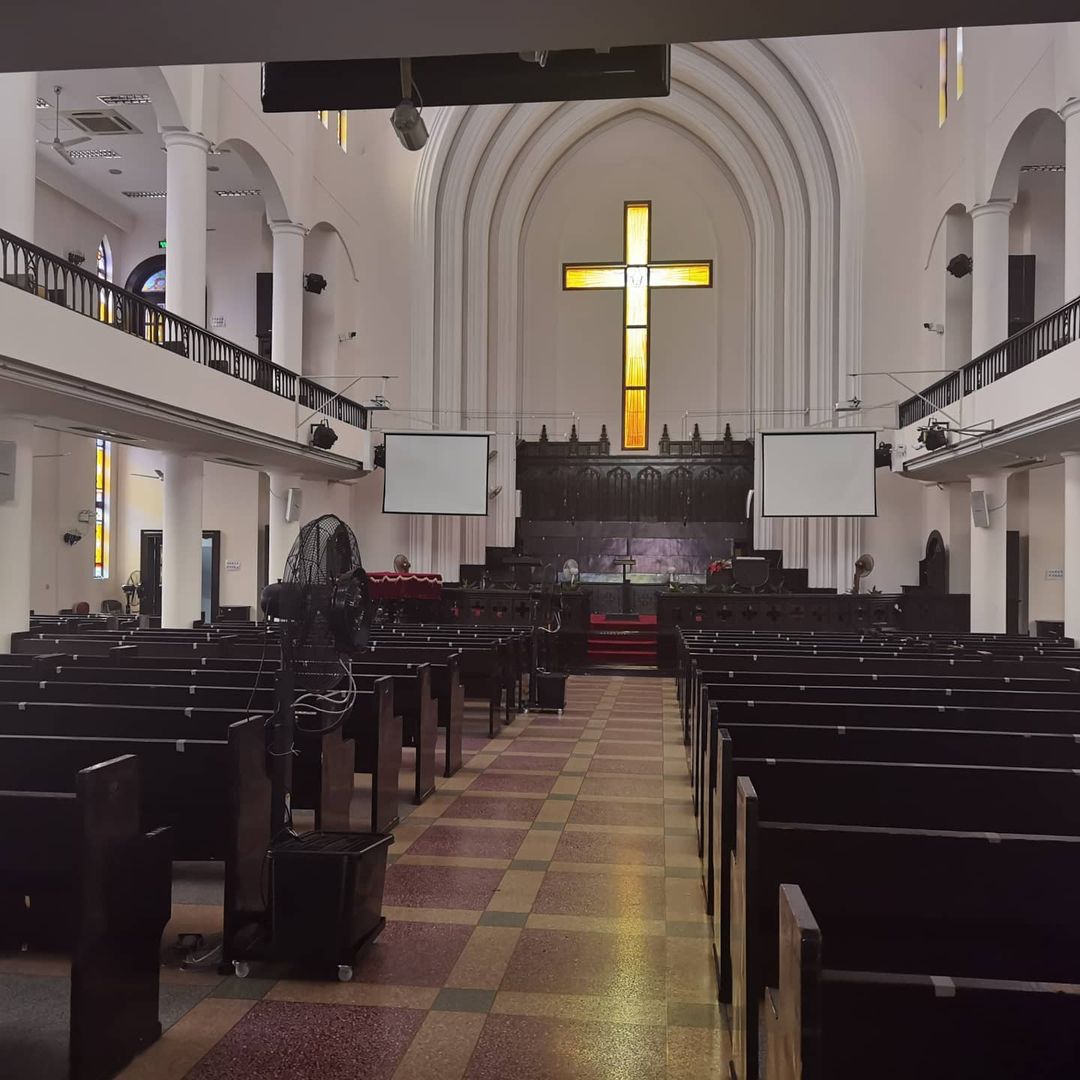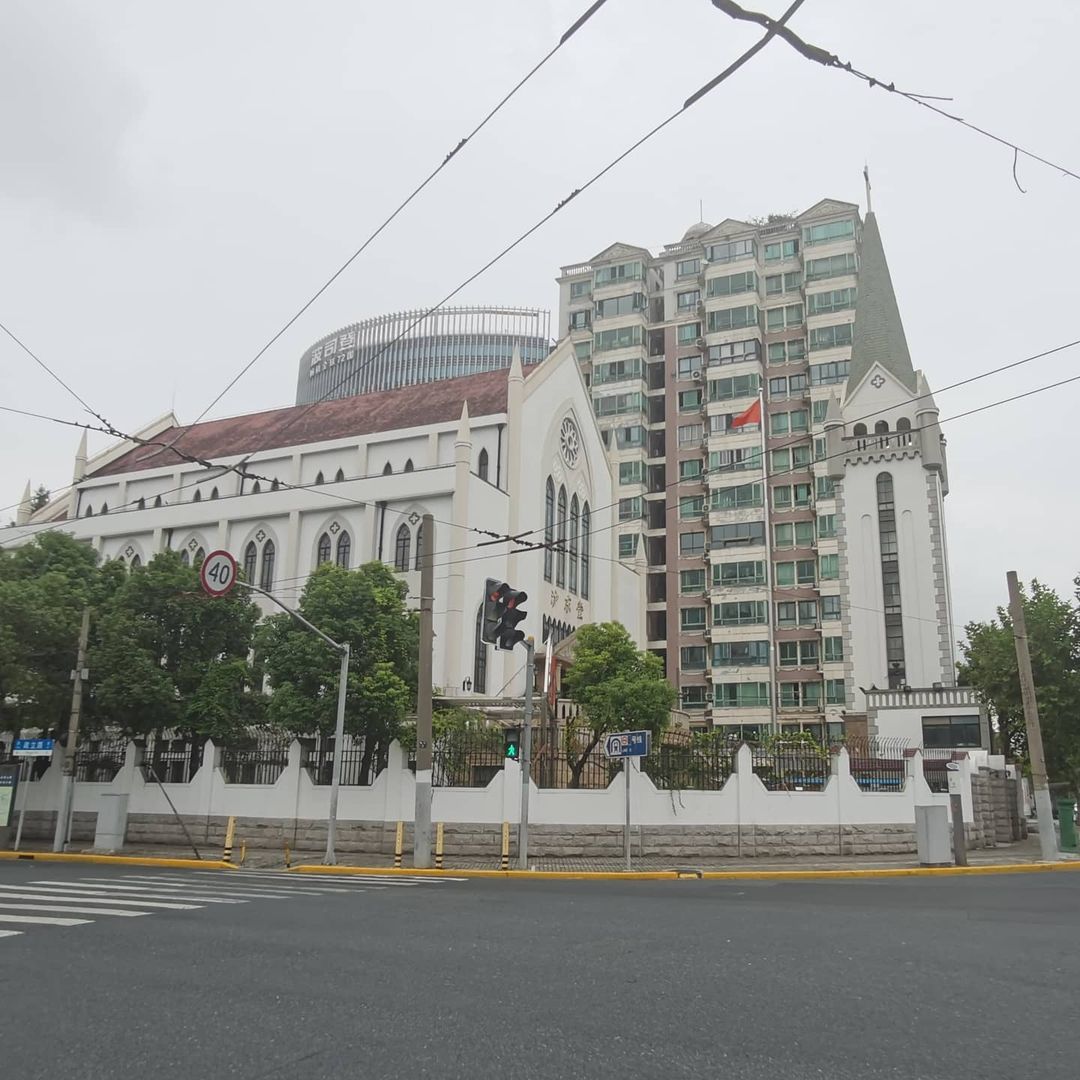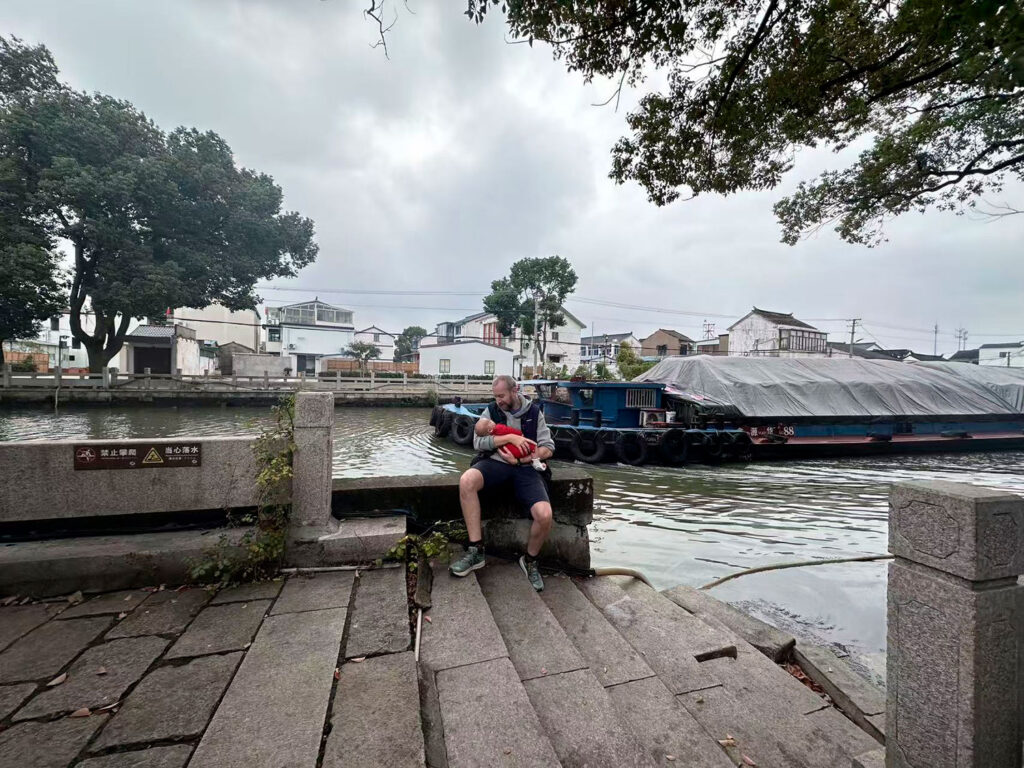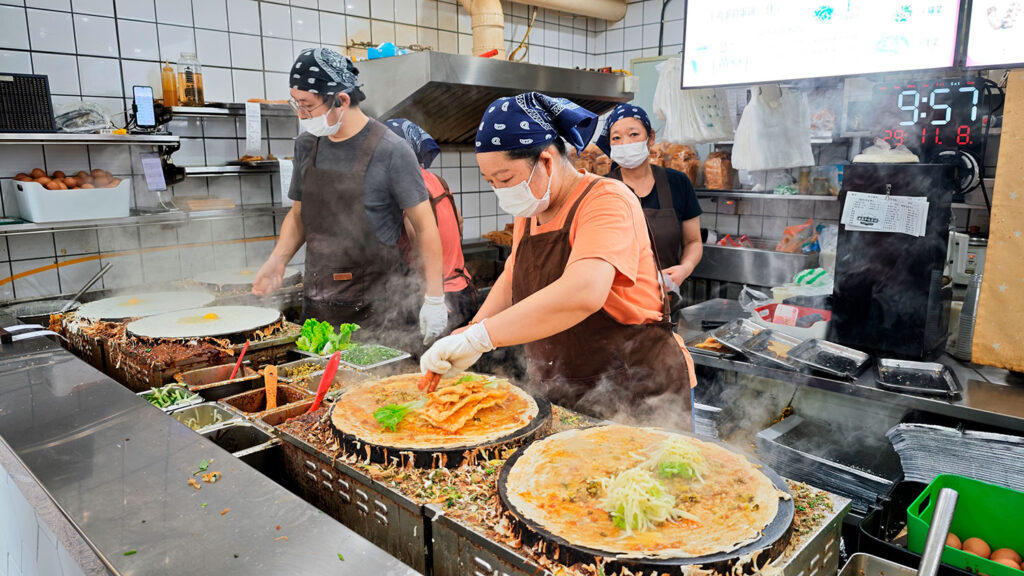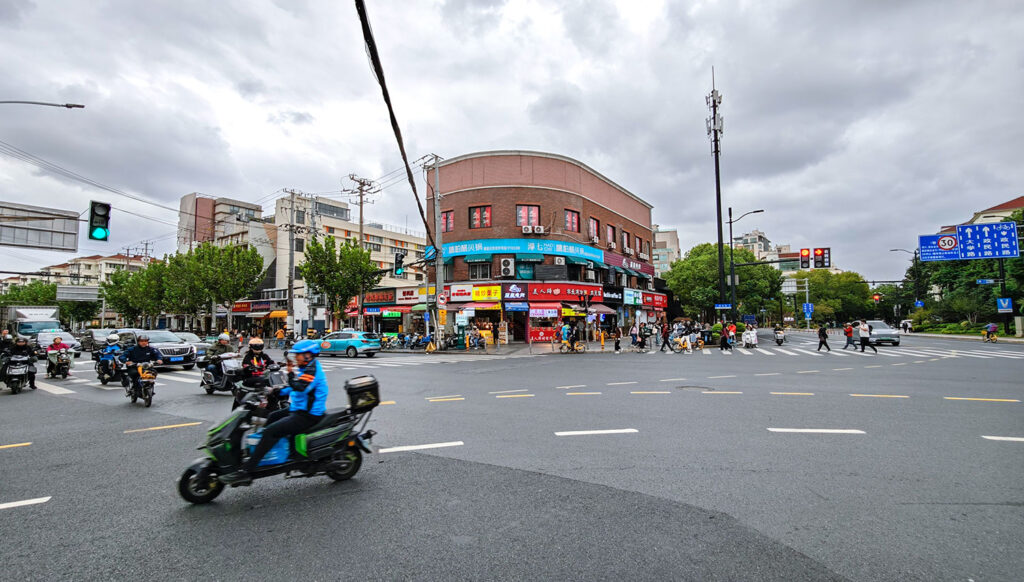When I pushed open the gate he said the church was closed, but when I replied in Mandarin he became more welcome to me: “Ok, have a look”.
We spoke about churches in the Netherlands, and I told him that in the middle of every Dutch village, no matter how small, stands a church. I told him Catholic and Protestant churches are decorated differently, and that I was baptized. (Though I had to look up those three Chinese words.)
“How different than in China,” he said, and then he went into a tirade about having no freedom in modern Shanghai, and that 上帝 (God) was the only one to understand him: “I suffered twenty years, only he saw it,” he said while pointing at the sky.
I had said nothing about freedom in the Netherlands, but his tinder only needed a tiny spark. The state-sanctioned church in China is a bit of a spaghetti, with influences all over. This building has roots at another location in the district, going back to a church opened in 1902 by foreign protestant missionaries. That church was somehow absorbed in 1958 by the Christian Chinese ‘United worship’ organization (联合礼拜), who were made up of Chinese citizens after the civil war — teaming up to worship together, despite their different interpretations of Christianity. Yet then in 1966, the Cultural Revolution (文革) labeled all forms of religions ‘spiritual opium’ (精神鸦片) and churches had to be closed, if not demolished. It’s not clear how this one survived, probably more in people’s minds rather than bricks — but it reopened on Christmas evening in 1982, which is still its current spell. In 1996, it moved to this new building five kilometers north of the 1902 location. If any photos of the earlier buildings exist, I cannot find them. A modern building with extracurricular classes for kids stands in its place now.
The church isn’t like any you’d see in the Netherlands. The architecture looks designed by committee, or rather three. On the facade below gothic arcs and stained glass hang golden characters: ‘沪东堂’ (East Shanghai Church), but the hall itself has a straight-cut triangular roof and pointy non-decorated pillars. The staircase comes with Greek-style pillars — and there’s a bell tower that stands awkwardly away from the main hall, with fake masonry blocks on the corner of its walls (called quoins in architectural terms).
“Do people sing here?”, I asked to try to change the conversation, because the tirade kept going on as we moved through the courtyard. “Yes they sing,” he said, and added I was welcome to join for Sunday’s mass, before he asked if I still believe in God. I said it’s difficult to answer, because I don’t pray to a God in the sky, and I although I was baptized, I have never ‘believed’. But I did add that I don’t think it’s that binary, whether one believes or not. (I used the words ‘black or white’ for I didn’t know how to say binary in Chinese). But it’s true, because with a church in every Dutch village, no matter how small, Christian culture is partly mine too.
